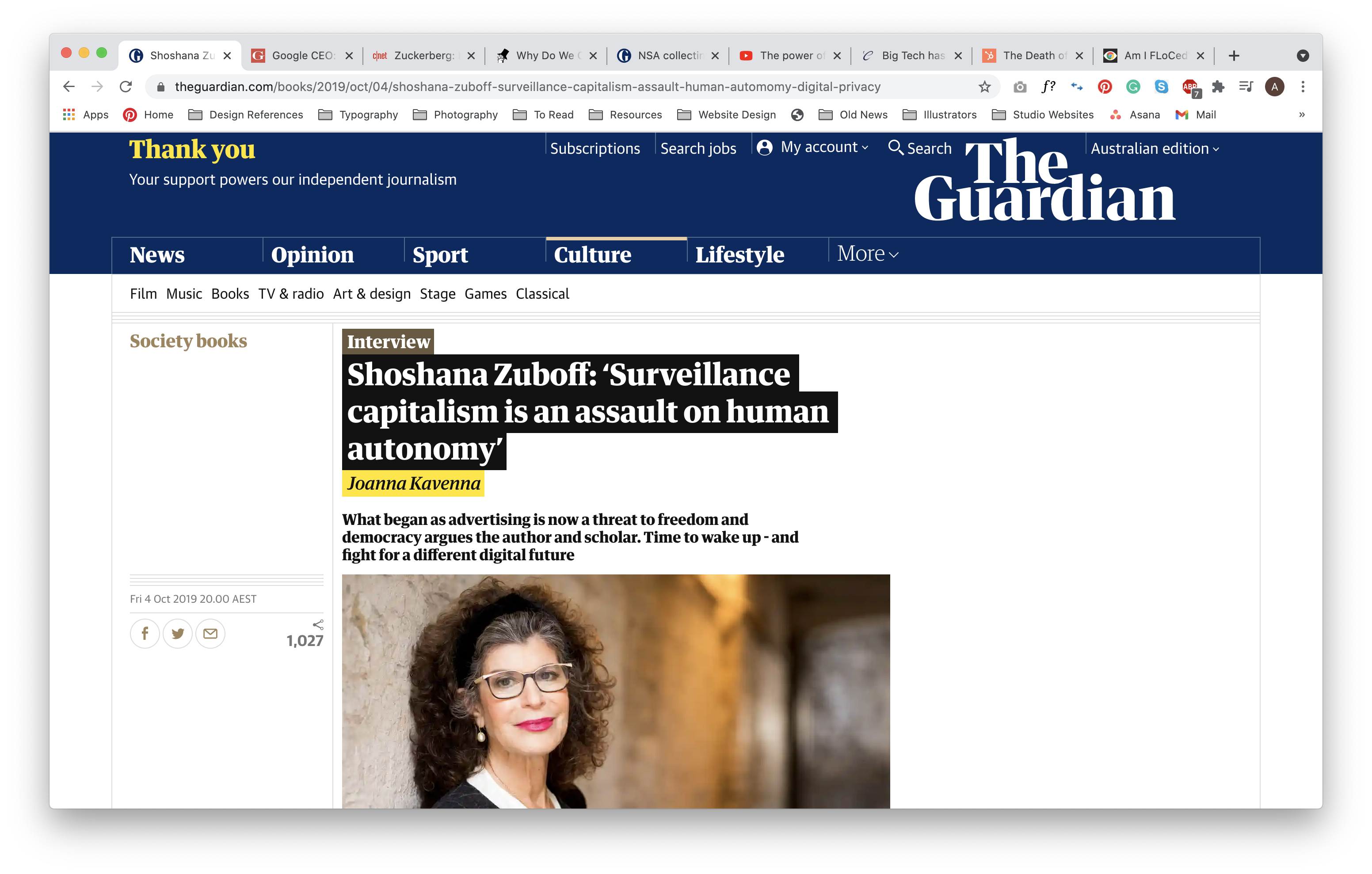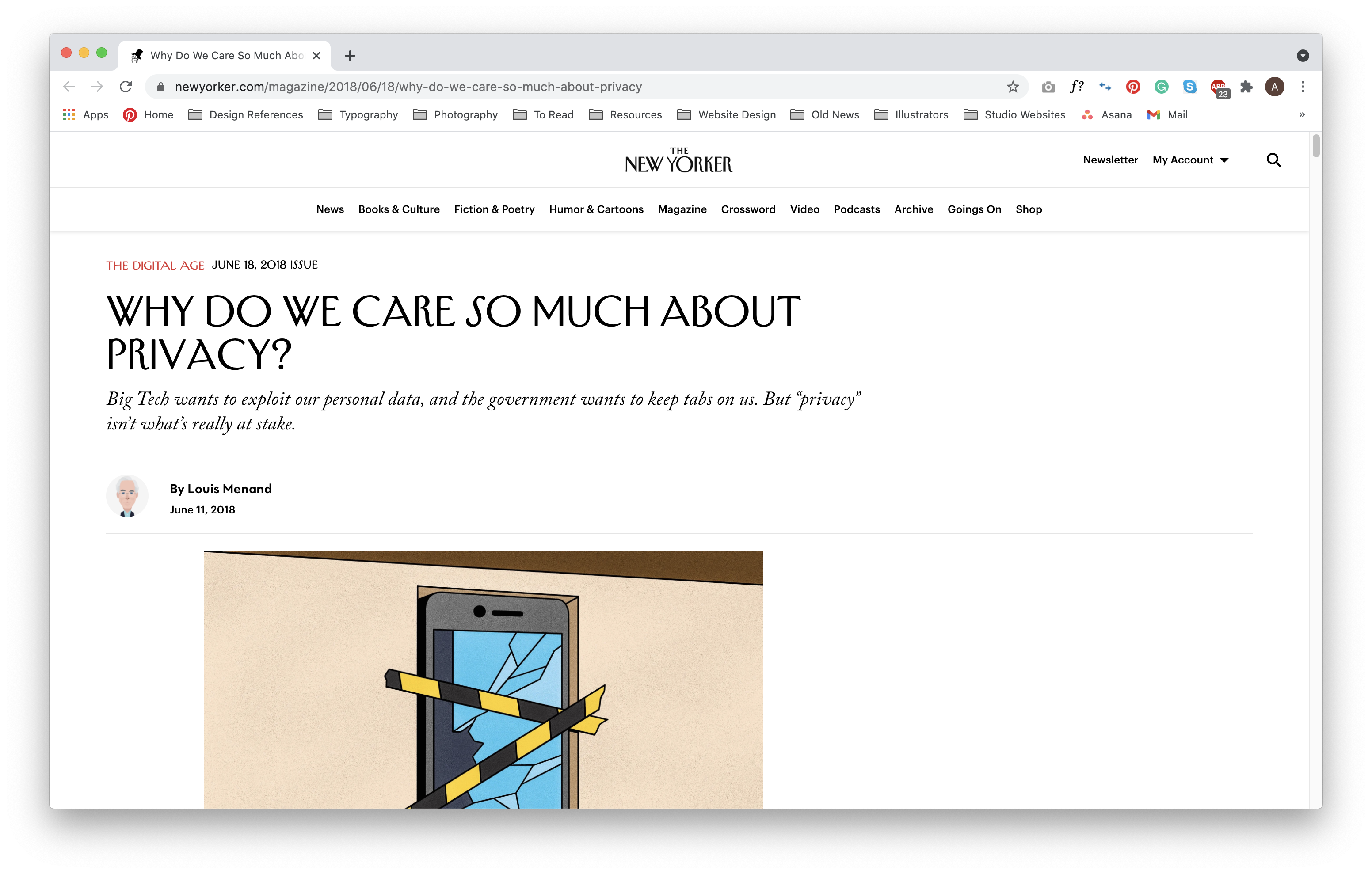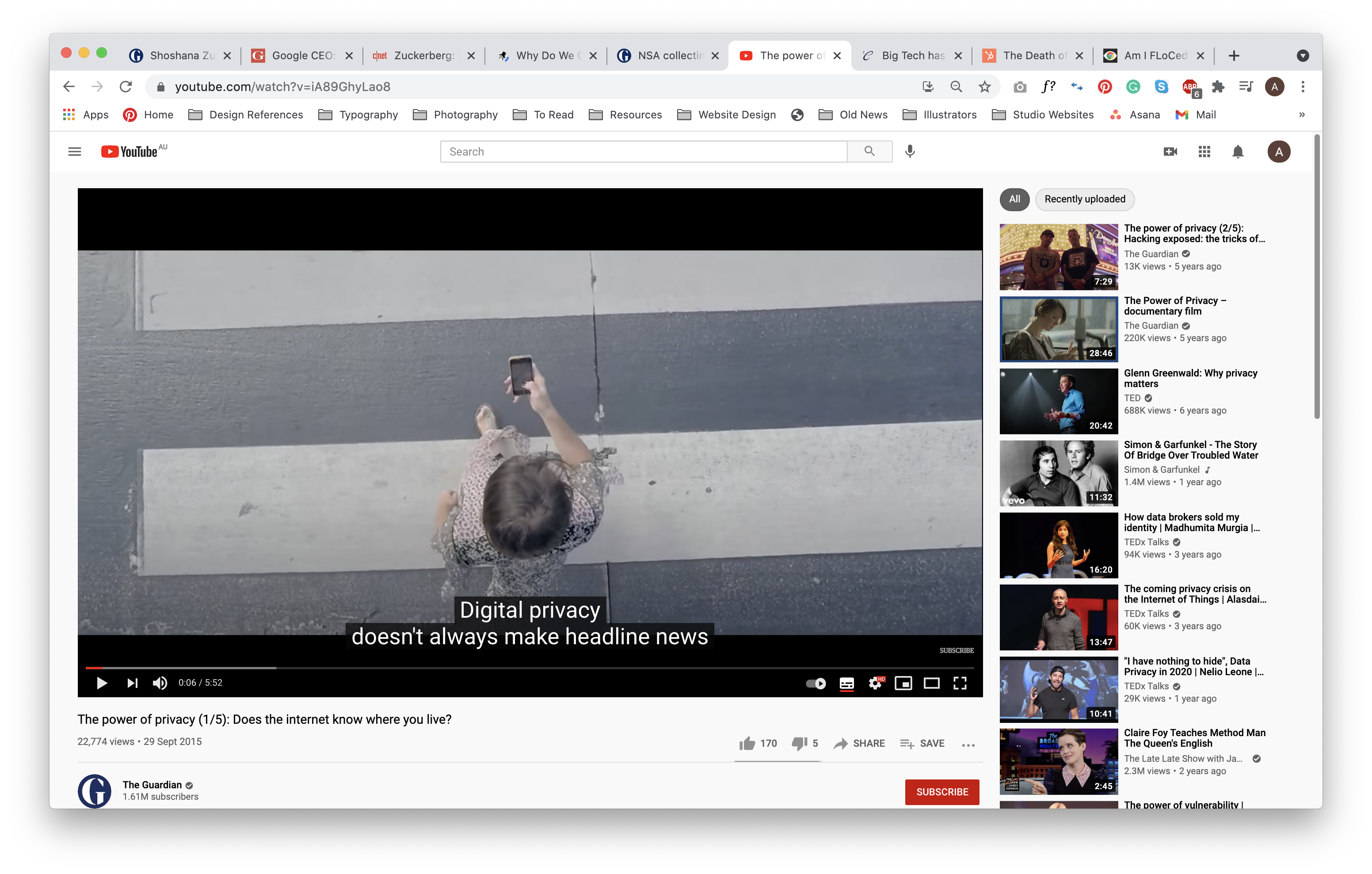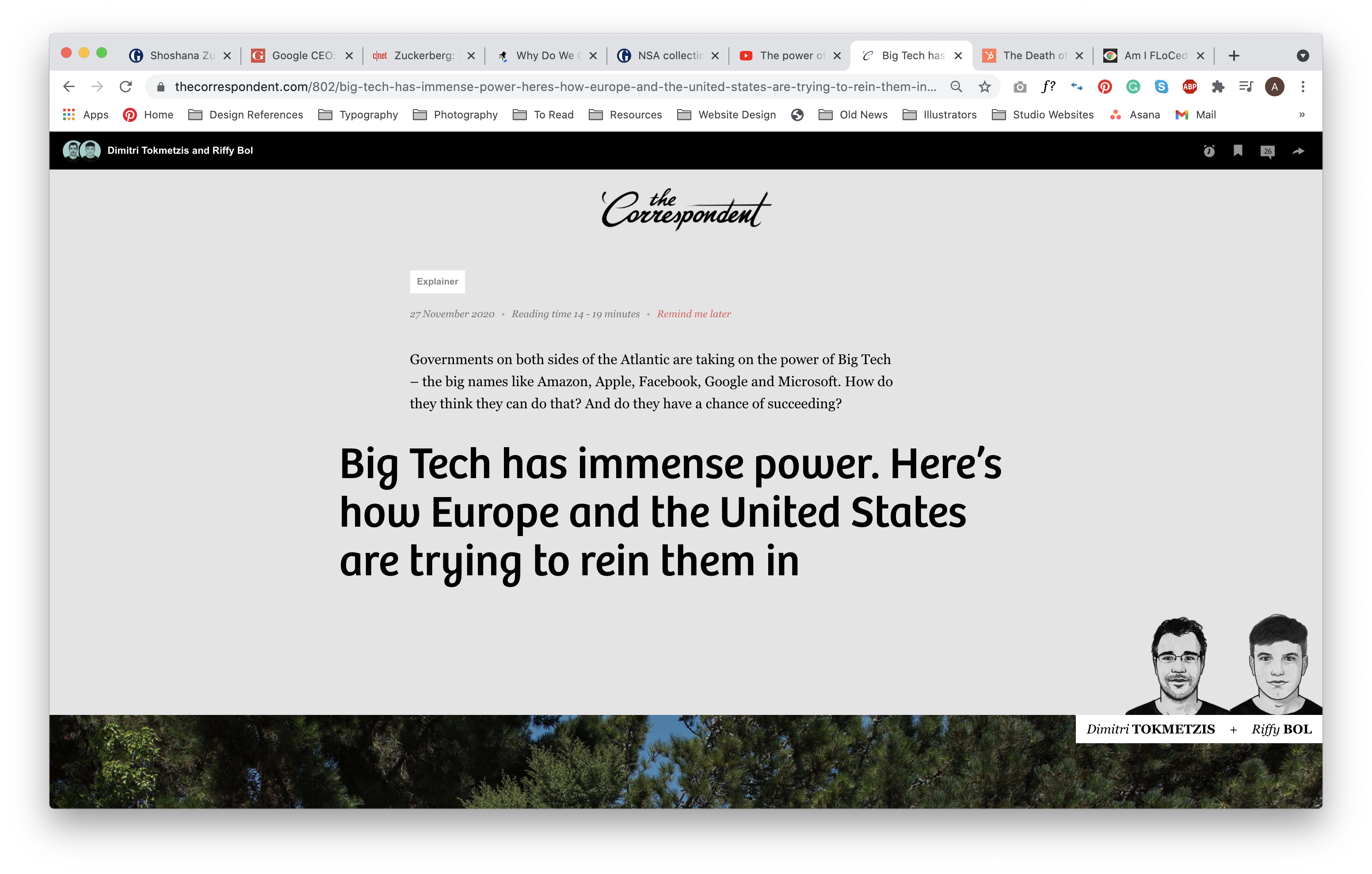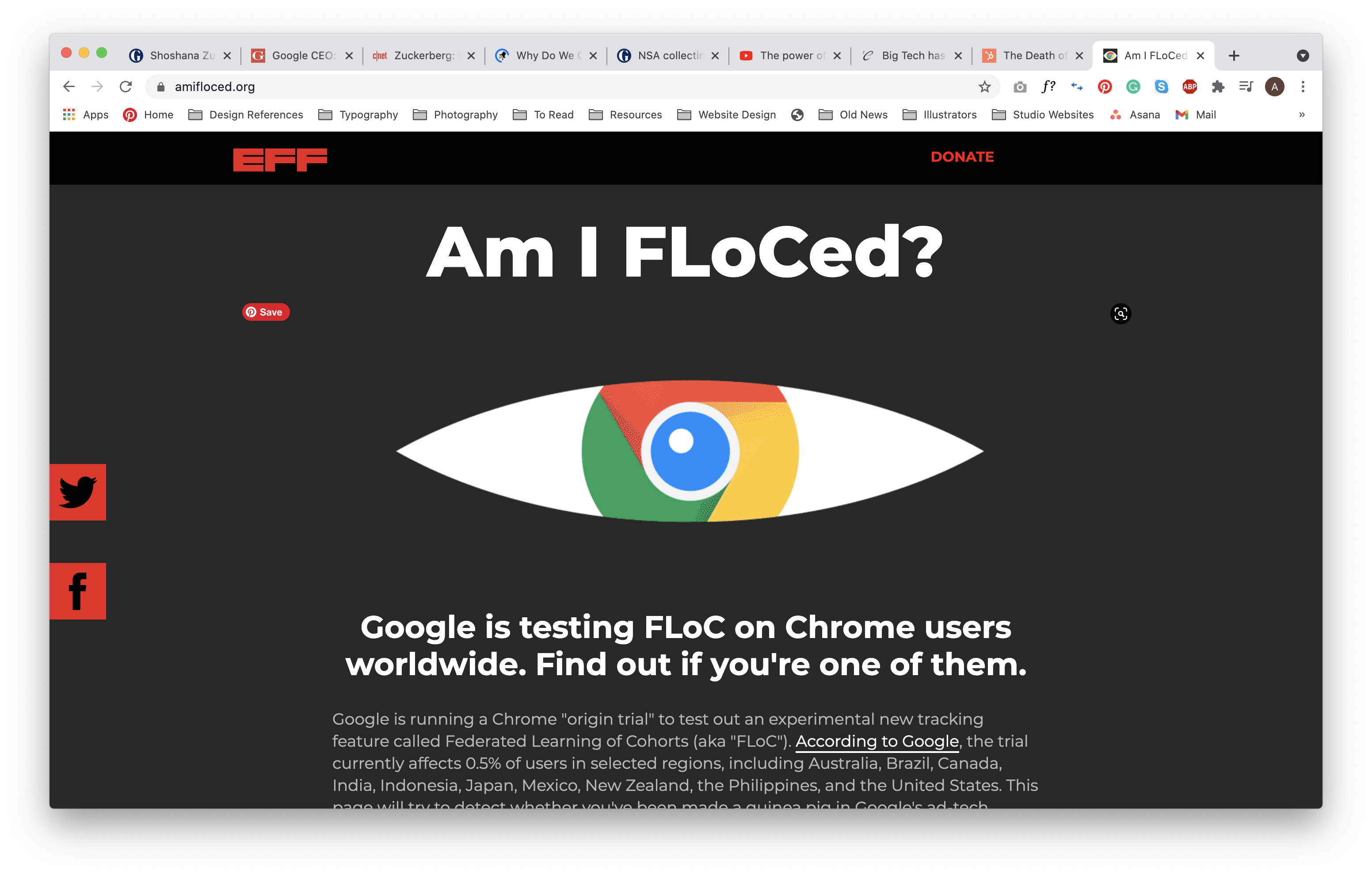In 2002, the question ‘What is Carol Brady’s maiden name?’ on US TV show Who Wants To Be A Millionaire? changed how we would experience privacy and The Internet for the coming two decades. The data team at Google saw a spike in search traffic for the query at regular intervals across five timezones in the country that night. What could it mean?
Engineers had begun to note with interest the surplus of behavioural data building up around the search engine, a push from a competitor into ranked advertising, and the start of AdWords at Google saw a realisation that they had the beginnings of something new. It was a ‘broad sensor of human behaviour’.
By 2003 it was no longer a search company but the first recursive learning system that could anticipate user needs and suggest services to meet them at a global commercial scale. Others soon followed suit.
From here on the development of a significant and wide-ranging challenge to our privacy, intentions and movements becomes murkier yet – but some things are clear.
A cosy relationship between security agencies (and by extension governments) and large tech platforms developed. Advertisers and their partners were more than happy to feed in more surplus to ‘render’ and take advantage of the advanced targeting options for their products and services. We were also complicit in the huge turn of the flywheel early on happily trading our data in return for services that do provide utility – but without much thought or ability to evaluate the cost.
The communications technology at our disposal is mostly useful, constructive and empowering. It is neither good nor bad, what we do with it as individuals, companies and governments define its impact and that requires our constant attention and inquiry.

